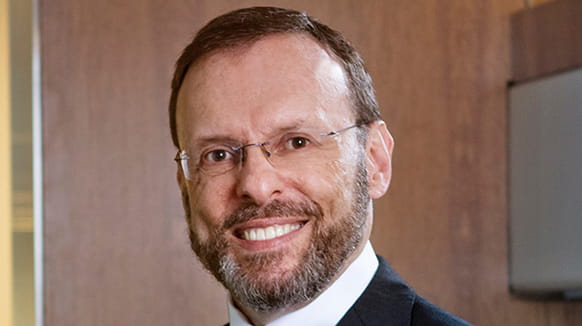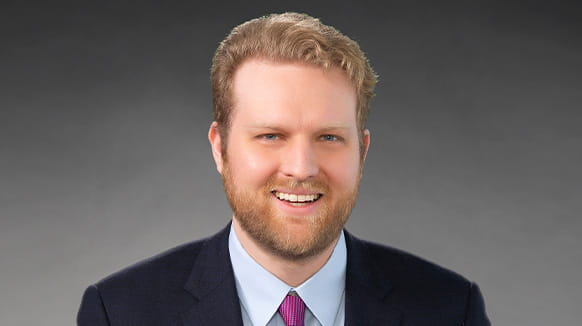Under mounting pressure from advocates and stakeholders—most prominently the United States government—the World Bank recently rescinded its longstanding ban on financing nuclear power projects and announced its plan to support certain nuclear energy initiatives. The World Bank is, at least initially, limiting its involvement to “accelerating the potential of Small Modular Reactors,” “extending the life of existing reactors,” and, in partnership with the International Atomic Energy Agency (IAEA), “building capacity and strengthening our ability to advise on non-proliferation safeguards, safety, security, and regulatory frameworks.”1
The move anticipates Congressional and Presidential initiatives targeting the ban, including H.R. 1474, the “International Nuclear Energy Financing Act of 2025,” advocating for the removal of the ban and other pro-nuclear actions currently moving through Congress with strong bipartisan support, and President Trump’s Executive Order (EO) 14299, which directs multiple actions promoting American nuclear exports, including leveraging American participation in Multilateral Development Banks (MDBs).2 These promotional efforts take place against the backdrop of an earlier order, EO 14199, requiring a 180-day review of American participation in international organizations, including MDBs, and its forthcoming report on which such organizations are “contrary to the interests of the United States.”3
H.R. 1474
H.R. 1474 would amend Title XV of the International Financial Institutions Act (22 U.S.C. 262o et seq.), directing the Secretary of the Treasury to instruct American representatives “at the World Bank, the European Bank for Reconstruction and Development, and other international financial institutions, as appropriate,” to advocate for “the removal of prohibitions… against financial and technical assistance for the generation and distribution of nuclear energy” and increase capacity at the MDBs for assessing the role of nuclear energy in client countries of the banks and the delivery of related technical and financial assistance. H.R. 1474 further calls for the establishment of “Nuclear Energy Assistance Trust Funds” at the World Bank, the International Bank for Reconstruction and Development, the European Bank for Reconstruction and Development, and other international financial institutions the Secretary deems appropriate. As the U.S. is the largest shareholder and funder of the named banks, any pressure from the U.S. Treasury Department has historically carried significant weight.
The World Bank’s ban was expressed in several different rules but was most expansively imposed through the exclusion list maintained by the International Finance Corporation (IFC), the bank’s private sector arm. Though H.R. 1474 discusses financing for the “generation and distribution of nuclear energy,” the text of the IFC exclusion list banned financing for the “production or trade in radioactive materials,” covering not just the financing of nuclear power plants, but the entire nuclear lifecycle. As noted by the Energy for Growth Hub, the IFC exclusion list is followed by numerous public institutions, including numerous other Development Finance Institutions, and percolates into the private sector though financing guidelines. Removal of this language may free up significant amounts of capital for nuclear projects.
As the language of H.R.1474 notes:
The People’s Republic of China and the Russian Federation have sought to export nuclear reactors to Europe, Eurasia, Latin America, Africa, and South Asia…. The Russian Federation is currently building 21 reactors outside its borders… when the Russian Federation launched its invasion of Ukraine in 2022, Russian state-owned nuclear operator Rosatom ‘boasted as many as 73 different projects in 29 countries’…. Russian companies have bilateral agreements or memoranda of understanding (MoUs) with 13 countries for services or general joint development of nuclear energy.
These Russian projects are typically comprehensive “Build-Own-Operate” projects, providing Russia complete control of the construction, ownership and operation of these export plants. These projects act as nuclear enclaves, necessarily binding the recipient countries to Moscow. Pertinently, Russia has made these entangling arrangements attractive by offering financing terms more favorable than the U.S. and its allies have been able to match. As a comprehensive 2022 analysis from Columbia’s Center on Global Energy Policy details, America, France and other prominent reactor exporters are bound by the Organisation for Economic Co-operation and Development’s (OECD) “Arrangement on Officially Supported Export Credits” which places limits on the maximum repayment terms, minimum interest rates, risk premiums and import/export content ratios which can be offered in support of an export project. A 2023 revision to the arrangement alleviated some of these restrictions, but OECD members face off against nonmembers—including Russia and China, who are not bound by the limitations of such arrangements. Russia has successfully used a mix of low-interest-rate debt and equity financing to support its export projects. H.R. 1474 explicitly recognizes this capability gap, stating the purpose of the desired nuclear trust funds as “ensur[ing] that the international financial institution makes financing available on competitive terms, including for the purpose of countering credit extended by the government of a country that is not a member of the OECD Arrangement on Officially Supported Export Credits.”
Recent American reactor exports have been supported through the combined action of the Export-Import Bank of the United States (EXIM) and America’s Development Finance Corporation (DFC), both of which have the power to issue loans and guarantee private sector loans. While EXIM is not permitted to engage in equity financing, the DFC may do so. However, to date, the DFC has limited itself to nuclear-related loans. This approach has met recent success in Poland and Romania—states antipathetic towards Russia and seeking energy independence.4 Poland and Romania have received several Letters of Interest (LIs) from EXIM and DFC, including statements of intent to finance projects. These LIs were subsequently realized as small loans funding the initial work on nuclear energy projects such as Front-End Engineering Design and material procurement, then as larger loans partially financing construction.
EO 14299
EO 14299, “Deploying Advanced Nuclear Reactor Technologies for National Security,” directs several actions to advance “Promoting American Nuclear Exports,” including utilizing the DFC, EXIM and the United States Trade and Development Agency to provide financing (or equity, in the case of the DFC) for the export of American nuclear technology. Pertinently, EO 14299 § 8(d) directs the Secretary of Treasury, in consultation with others, to develop a strategy within 90 days that:
(i) leverages United States participation in the multilateral development banks to support client country access to financial and technical assistance for the generation and distribution of nuclear energy and a reliable fuel supply; and
(ii) supports such assistance at relevant institutions to make financial support available on competitive terms, strengthen the capacity of such institutions to assess, implement and evaluate nuclear energy projects, and support adoption of nuclear energy technologies and fuel supply chains that meet or exceed the quality standards in the United States or a country allied with the United States.
EO 14199
The efforts advanced by H.R. 1474 and EO 14299 are taking place against the backdrop of the Feb. 4 EO 14199 requiring that “the Secretary [of State], in consultation with the UN Ambassador, shall conduct a review of all international intergovernmental organizations of which the United States is a member and provides any type of funding or other support, … to determine which organizations… are contrary to the interests of the United States and whether such organizations… can be reformed.” As noted above, the U.S. is the largest stakeholder in several MDBs that have excluded the financing of nuclear projects. The ongoing review, with a report due 180 days after the Order (Aug. 5), appears to be a catalyst for the World Bank’s rescission and is likely weighing on other MDBs. The predicted domino effect of the ban’s rescission has already been demonstrated, with the Asian Development Bank considering lifting its own ban.5
Of note, EO 14199’s 180-day review deadline runs before EO 14299’s 90-day strategy deadline, possibly signaling that the administration expects the report to recognize the strategic value of the MDBs in pursuit of its nuclear goals and impact the direction of the proposed strategy.
Though the World Bank took action before Congressional scrutiny and possible impacts resulting from EO 14199’s review, the language of H.R. 1474 and EO 14299 demonstrate that the U.S. Government has identified MDBs as a powerful tool for countering the influence of Russia and China through nuclear diplomacy. As we continue to see the nuclear energy industry expand and regulations evolve, both domestically and internationally, the pressure to eliminate barriers to financing is likely to continue for international organizations – particularly pressure from the U.S. as America seeks to boost its nuclear export competitiveness.
1 Remarks by World Bank Group President Ajay Banga at the Signing of a Partnership Agreement with IAEA Director General Rafael Grossi, World Bank Group (June 26, 2025), https://www.worldbank.org/en/news/speech/2025/06/26/remarks-by-world-bank-group-president-ajay-banga-at-the-signing-of-a-partnership-agreement-with-iaea.
2 H.R. 1474, 119th Cong. (2025); Exec. Order No. 14,299, 90 Fed. Reg. 22581 (May 23, 2025).
3 Exec. Order. No. 14,199, 90 Fed. Reg. 9275 (Feb. 10, 2025).
4 These agreements were partially facilitated pursuant to the U.S. Department of Energy’s Partnership for Transatlantic Energy and Cooperation (P-TEC) an eastern and central European forum for collaboration on energy issues initiated under the first Trump Administration. https://newsroom.fluor.com/news-releases/news-details/2024/Fluor-Awarded-Contract-for-Next-Phase-of-Engineering-and-Design-for-Small-Modular-Reactor-Power-Plant-in-Romania/default.aspx
5 Jamie Smyth & Harry Dempsey, Asian Development Bank considers lifting funding ban on nuclear power projects, Financial Times (June 16, 2025), https://www.ft.com/content/27f869c5-17a8-4d57-bb76-f9ac9ea13697.


